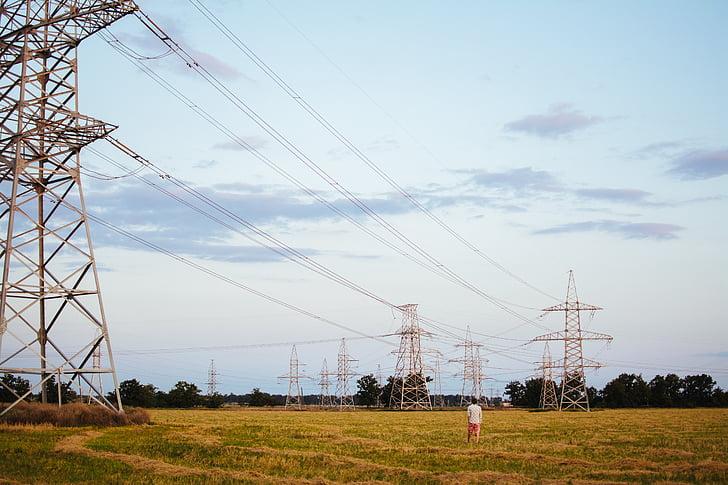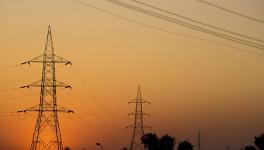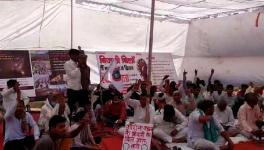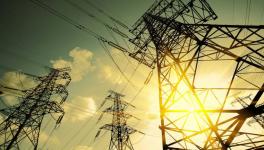Electricity Amendment Act: Government Experiments with Physics of the Impossible

Representational image.
The coal crisis in the country has brought out the larger crisis of the electricity sector. In the name of reforms, the government has slowly dismantled the infrastructure of this sector. The responsibility to supply electricity to people has been put on distribution companies, who carry the entire burden of the sector. Now, reforms proposed in the Modi government's Electricity (Amendment) Bill 2021 take market fundamentalism to absurd levels; the government believes it can magically separate the electricity flowing through the wires from the wires through accounting.
The recent coal crisis has also brought out the complete lack of coordination between the power and the coal ministry, which led to a significant shortfall in power generation, especially in the Northern region. The central government mismatched coal supplies and power demand, which caused hours of load shedding while certain private power producers made windfall profits. Facing blackouts, some state distribution utilities, such as those in Andhra Pradesh, Punjab, Uttar Pradesh and Gujarat, were forced to buy power at exorbitant prices from the power trading platform Indian Energy Exchange (IEX). In these weeks of shortages, the spot price of electricity rose to Rs. 20 per unit against the average electricity price of about Rs. 2.75 in the exchange. Some power producers made windfall profits from these shortages.
In an earlier column, I wrote about the abysmal failure of the coal and power ministries in creating this artificial shortage of coal for the power plants. A press release dated 4 September records a meeting of secretaries and other senior officers of the ministries of power, coal, railways, the coal companies, power utilities and Central Electricity Authority (CEA). It makes clear that the Ministry of Power was clueless about the impending crisis. It talked of setting up a “Core Management Team (CMT)... to closely monitor the coal stocks at TPPs...” Power Minister RK Singh said at the meeting, “Coal Subsidiaries of Coal India Limited (CIL) were advised to adhere to the targets given to them for September 2021 and make all-out efforts to ramp up coal production so as to gradually build up coal stocks at TPPs...The stock has to start building up from mid-October so that during foggy season in December no difficulties are encountered.” (Italics mine). He did not even mention the extremely low stocks with the power plants for months and expressed no understanding that the reopening of the economy, combined with the festival season, would immediately create a crisis. Instead, the coal sector and the power plants were told to start building their inventories from mid-October for foggy conditions in December!
Condemning the inaction of the regulator and the profiteering by private power producers, the All India Power Engineers Federation (AIPEF) chairman Shailendra Dubey demanded a meeting of the Forum of Regulators to stop profiteering in the IEX by using short-term caps for spot market prices. Earlier, the All India Power Engineers Federation had written to the Union Power Minister that the power generation and transmission companies were making profits after the unbundling of the State Electricity Boards. In contrast, the distribution companies have suffered huge losses. Unfortunately, the distribution companies (“distcoms”) are the ones who directly face the consumers. They cannot lay the burden of the entire cost of power—the rising coal, railway freight, generation and transmission costs—on the consumer. Today, the distcoms recover only about 75-80% of the costs of the power they supply to consumers, and the difference accumulates as their losses.
The central government, which lectures distcoms and state governments on their losses, owns NTPC, a major power producer, the Indian Railways and Coal India Limited. All these make significant profits at the expense of the distcoms. A large part of the profits of NTPC and Coal India are transferred as dividends to central government coffers while the high freight charges for coal subsidises the passenger traffic of the railways! All these are essentially the central government’s “taxes” on state distcoms.
The power engineers and employees have also opposed the recent move of the central government to unbundle distribution companies in the name of reforms. These reforms are in the Draft Electricity Amendment Bill 2021, which has been on the anvil for some time in various avatars. The key focus of these so-called reforms is to push private players to set up distribution companies that will own no electricity infrastructure but will only trade electricity. The reforms will force state-owned distribution companies who own all the distribution assets—the lines or wires through which electricity comes to our houses, the transformers and other associated equipment—to allow traders to supply electricity to their consumers using their infrastructure. It also proposes to de-license the distribution companies, meaning no license will be required to be a distribution company. A trader or a distribution utility with its vast infrastructure will have the same status and get regulated similarly. It is an unheard-of move in the electricity sector. Globally, there is no major grid that has taken such a step. Even the Forum of Regulators has been extremely critical of the amendments, giving a set of comments that runs into 38 pages!
The scheme to allow electricity traders to supply to any consumer amounts to cherry-picking high-end consumers from the existing distcoms. Once the traders have cherry-picked these consumers, the existing distcoms will suffer even bigger losses. It will create even more problems for distcoms in maintaining their physical infrastructure, on which both the consumers and the traders depend. If this infrastructure cannot be maintained, the crazy dream of a few market fundamentalists to separate electricity supply from the physical wires through which it travels will turn into a nightmare for consumers.
The other attempt through these amendments is to directly extend the central government’s powers into the domain of the states. Any electricity trader operating in more than one state will be registered with the Central Electricity Regulatory Commission and not with the State Electricity Regulatory Commission. It effectively takes away the ability of the state regulator to regulate distribution, as some of the major “suppliers”—meaning electricity traders—will not be under their jurisdiction. Again, the Centre and its various agencies refuse to understand the basic reality that the electricity system is integrated and cannot be split up in regulatory terms to extend the Centre’s powers over the states.
The critical problem in privatising distribution is how to supply electricity to rural areas and farmers on whom rests our food security as a nation. These are areas where private capital does not want to enter. That is why the Odisha reforms failed: the private distribution utilities did not want to serve their rural consumers. That is why Delhi’s privatisation is a “success”; it has very few rural consumers. That is why the Calcutta Electricity Supply Corporation and such urban utilities were successful; they dealt with only urban areas.
Nor is this a peculiarly Indian problem. Even in the well-off United States and their relatively wealthy farmers, this was a problem. The utilities did not want to spend much money connecting far-flung households in sparsely populated rural areas to the grid. Roosevelt’s New Deal had as one of its key elements extending the grid to all such places.
In all its earlier avatars, distribution reforms in India sought to experiment with separating the urban areas using the franchise model. Most of these experiments failed, and finally, the state had to step in and take back these franchisees’ operations—just as it had to take Odisha back from Anil Ambani's Reliance Infrastructure Ltd.
This proposed distribution reform is even worse. Clearly, rural households will continue to be with the state distribution companies. Once private traders take away high-end consumers, the ability of state distribution utilities to serve rural consumers will deteriorate even further. Already, farmers are fighting for remunerative prices and against the Modi government's reforms that seek to hand farms over to Big Capital and traders. If the power distribution companies are “unbundled”, as envisaged, then agriculture or rural industries will have little chance at survival.
New schemes such as Universal Service Obligation in electricity will further extend the Centre's grip over state finances. Already, the central government controls inputs such as coal and the railway's freight charges to carry coal and electricity supply to state distribution companies. If these costs rise, the central government makes higher profits. The state governments take a double hit: they face people’s anger and suffer even more significant losses. Not surprisingly, the Opposition-ruled states have opposed the proposed amendments, as have engineers and workers in the electricity sector.
Unfortunately, even with evidence of market failures right before its eyes, the government is pushing policies that will further endanger the sector. Even in the homeland of Big Capital, earlier failures in California and recent failures in Texas have shown that markets do not work in the electricity sector. To try to make it work regardless damages not only the electricity sector but the entire economy. This is a lesson the Modi government, with its belief in market fundamentalism, refuses to learn.
Get the latest reports & analysis with people's perspective on Protests, movements & deep analytical videos, discussions of the current affairs in your Telegram app. Subscribe to NewsClick's Telegram channel & get Real-Time updates on stories, as they get published on our website.





















